Whether you’re a beginner or a seasoned tyer, fly tying books can provide inspiration and valuable instruction to help you get the best out of your time at the vise. Here I review some great books that I have personal experience with – and these span a wide range of ability-levels.
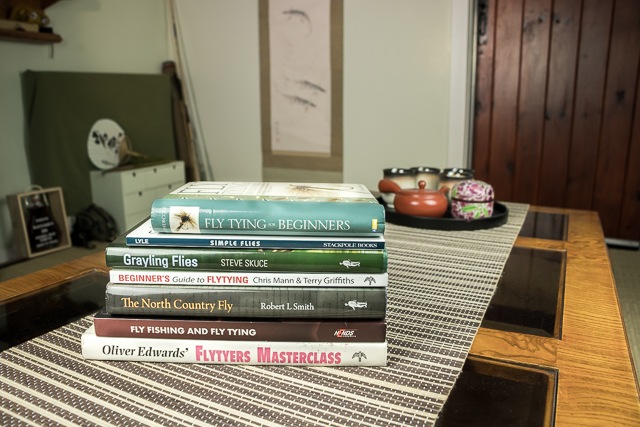
As with any instructional material, there is a real spread of both quality and suitability of tying books for each individual tyer. Some publications aimed at novices don’t give the beginner the necessary secrets to mastering the foundations (or at least not in a clear-enough form) – and that is an issue of quality. Others are simply not aimed at tyers outside a specific stage of skills development (whether that level is “expert” or “starting from scratch”) – which is an issue of suitability.
That’s why I’m sure you’ll find this article helpful in guiding you to the right choices for you. All of the books featured pass the “quality issue” test – so the main purpose here is to help guide you on “suitability” for you, personally. Also, if you need it, you’ll find guidance on fly tying vises here. Similarly, you can also read a separate basic overview and guide to getting into fly tying in general to orientate yourself.
If you find that you’d like to order any of the titles covered, please note that we will earn a small commission from Amazon for purchases made using the links on this page. It doesn’t cost you any more than buying it directly from Amazon, and we really appreciate your support in offsetting some of the site’s running costs – thank you!
Fly Tying Books: My own personal starting point
As well as general fly fishing books, the very first book that I was given (for my 14th birthday) to help me improve my fly tying was “Imitations of the Trout’s World” by Bob Church and Peter Gathercole in 1987.
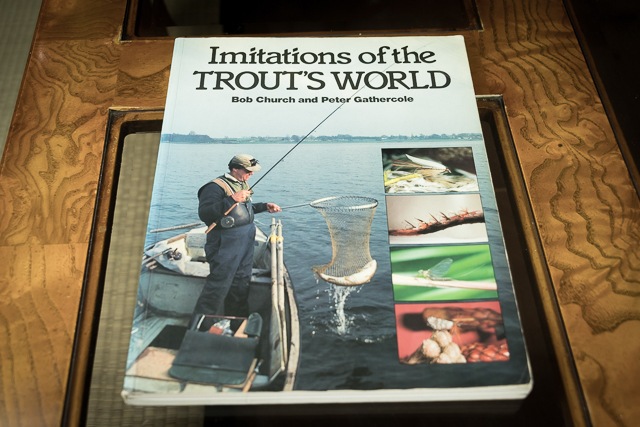
By walking through a number of iconic (mainly stillwater) trout patterns, I was able to learn the techniques of winging, hackling, ribbing and body creation – as well as the fundamentals of catching on the thread and the infamous “two-finger whip finish”. The stories of different waters, fish captures and the use of the flies in the book certainly inspired me into a lifelong pursuit of both tying and fishing artificial flies in both still and flowing water around the world.
So it is personally really nice for me to be able to feature Peter Gathercole (and a much more recent guide to tying he has created) as my first review example…
Fly Tying Books For Beginners
Fly Tying for Beginners – An introduction to tools, techniques and materials, plus instructions for tying 50 failsafe flies (Peter Gathercole, 2005)
Overview
Written and photographed in full colour and great detail by Peter Gathercole, this book is set up to introduce tools, techniques and materials to the absolute beginner in fly tying. It builds on those subject area introductions to walk you through the creation of 50 fly patterns.
A really nice design feature of the book is that, although it has an attractive solid spine that looks good on the bookshelf, the pages are actually attached by an internal “ring-binding”. When you couple that with the fact that the patterns are covered by means of double-page spreads, it means you can lay the book out, completely flat, on your tying bench.
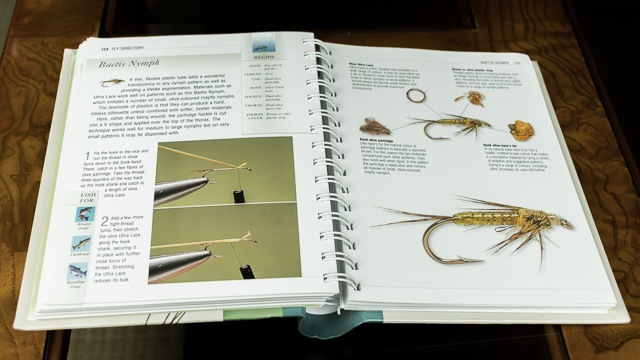
Because of the ring binding, the book naturally lays open on the double page for the fly you want to tie – and it leaves both your hands free to complete all the steps, while following the pictures and instructions.
The 255 internal pages give very good coverage of fly tying materials and tools in full colour photos and descriptions. The core techniques of tying are covered in pages 14 to 44 with lovely photographic sequences, good tips and solid demonstrations that allow you to become a competent tyer. For example, there are some very good tips on how to create a neat and robust feather-fibre body.
For tiny areas of improvement:
- It would be nice to have some more detail on the critical importance of a completely smooth and uniform underbody – particularly when creating neat tinsel bodies (but you know that now!).
- The Pinch & Loop (or soft loop) are very difficult to show in detail using photography (since the important details are hidden from view during normal tying); but the photos and instructions given will still certainly allow you to learn those techniques.
- The whip finish using a tool is well photographed, though you’ll still need some concentration to follow the written steps (after all, this is very difficult to describe!)
Featured Flies
The selection of patterns covers a lot of bases. It has the feel of a stillwater trout angler who occasionally also fishes rivers and the salt – so a good “all-rounder”. You’ll find flies that target trout, grayling, salmon (one for Atlantic salmon and other options for Pacific salmonids) and all-round predatory fish in both fresh and salt-water in this book. Both traditional and more modern designs are featured and Gathercole’s book will give you the skills to apply to almost any other patterns you come across and want to tie. There may be some obscure specific examples (e.g. Polish Woven Nymphs) that you’ll need to add another technique to your bag of tricks – but they will be few and far between.
Buy Fly Tying for Beginners on Amazon UK:
Buy Fly Tying for Beginners on Amazon USA:
Beginner’s Guide to Fly Tying – Step-by-step instructions for 12 popular and versatile fly patterns (Chris Mann & Terry Griffiths)
Chris Mann and Terry Griffiths have produced a masterpiece in this little book in my opinion. In only 76 pages, you’ll find a brilliant and concise guide to start your fly tying journey.
What makes it so good? Well, there are several factors that set it apart in my opinion:
- Each of the 12 patterns is used to introduce you to particular core skills – so that every time you tie a new pattern you end up with both that new fly to use AND a new technique to apply elsewhere
- It is exceptionally well thought-out (so that not a single word is wasted) – right down to the order in which all information is presented so as to avoid unnecessary repetition/jumping ahead or clarification. The result is a book that is incredibly CLEAR and easy to follow and understand.
- The “Tricks of the Trade” sections are supplied just exactly when you need them as you progress through the book (giving you performance-boosting tips only when you are ready for them – building on the foundations you have already established in previous steps)
- The use of incredibly high quality DIAGRAMS to show and explain each step (instead of photographs). In fact, coupled with the well-planned writing structure, the bold choice of drawings over photos might be the most important factor that lifts the book well above the herd.
Many of the secrets of material control (which is at the heart of good fly tying) happen while the critical parts are hidden from view. The ability to include transparency or cutaway sections in diagrams is what makes them so useful in instruction.
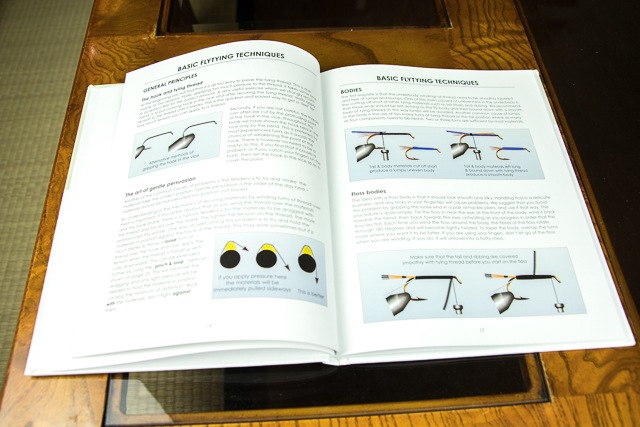
I’m also a fan of the specific choice of just 12 patterns that gives a solid basis in fishing both rivers and lakes for trout (and to a lesser extent, grayling). The selection is clever because, with just a few variations in colour or material will dramatically increase the range of patterns available to you.
More Examples of what’s good about this fly tying book
- In the second of the “Tricks of the Trade” highlighted sections, the authors introduce a diagram to show you “Perfect Position” in fly tying. They basically use that diagram (and accompanying text) to break down the different parts on a hook to create a “map” that you can use to hit perfect proportions for each component of any fly that you tie. This is typical of the many thoughtful aids to learning how to tie well right from the start that you’ll find in this great little book.
- Other lovely examples include tips like “the art of gentle persuasion” which are ruthlessly practical guides to avoiding the frustration caused by so many common pitfalls and faults we ALL encounter on our fly tying journey.
In short, I don’t believe I’ve seen a better “absolute beginner’s” quick-start guide to tying flies in book-form.
You can Buy Chris Mann’s Fly tying for Beginners on Amazon USA (either Kindle or hardback) Here:
You can Buy Chris Mann’s great book on Amazon UK Here (paperback):
Buying this, plus your choice of supporting DVDs/books of patterns specific to your own fishing/more advanced tying instruction is a great way to set yourself up to succeed – and have fun while you’re doing it.
Side-Note on Supporting Materials
A great candidate for those supporting resources is JP’s excellent “Complete Kebari Collection” online tying masterclass.
Click here to enrol and learn how to tie the full fly box pictured above.
This easy-to-follow video guide allows you to create a dozen patterns that will arm you for most of the conditions you’ll fish on any river in the world. It also features (in my opinion) the best demonstration of the absolute fundamentals of catching the thread on, forming an underbody and also using a whip finish tool. You’ll also learn hackling techniques, thread-dubbing and many tricks of the trade. Along with the flies, there is fascinating backstory footage of their creators and key figures in Japanese tenkara.
Fly Tying Books to help you Progress: Extending your range
Simple Flies: 52 Easy to tie patterns that catch fish (Morgan Lyle)
Morgan Lyle is a pro-writer with a journalism background – and that quality shows in this great book. Right out of the gate he admits that there are many more comprehensive guides to beginning fly tying from scratch (and that this book isn’t specifically designed to meet that need). BUT, that being said, it still actually contains enough introductory tuition and guidance on materials that it is probably possible to pick this up and learn to tie from standing start.
However, I think that the best approach might be to combine a custom-designed beginners guide from this article (above) with Lyle’s book and then enjoy expanding the range of patterns you can tie and fish with.
This is a book for inspiring you with both what to tie AND how to have confidence in those patterns once you’ve created them. The short stories of key characters relevant to particular flies or the general philosophy behind simple fly patterns in general are fascinating and really well written. So as well as learning new patterns to tie, it is actually an enjoyable book to sit down and read for its own sake too. There’s also quite a few more clues on the actual fishing approaches relating to the various flies too (relative to the beginner’s books featured here).
With some basic skills under your belt, I can see the enjoyment in leafing through the book and picking out a pattern to tie, absorbing the story of that fly and then slipping it into your on-stream box to try the next time you head out with your rod. Lovely.
Quality example
Here’s a great example of the quality of Lyle’s writing “Hot spots are often employed by competition anglers to bring attention to their flies, since a trout can’t eat a fly it hasn’t noticed”. That elegant economy of words clearly explains a deep and useful idea in a very straightforward way. Try to capture the various implications made in that statement by using fewer words (without losing the valuable meanings).
Types of fly
I think, compared to the “beginners’ guides” above, Lyle’s collection of patterns is geared more towards helping you create a box of flies for fishing trout streams. Also, in that capacity, I think the featured patterns look more like the flies I’d find (and have confidence using) in my own river trout fishing box.
With that in mind, I’d have good confidence in fishing these patterns over a wide range of situations and conditions in flowing water. At the same time, the section on streamers also extend the fishing applications of this book within and beyond fishing for trout in rivers.
You can Buy Simple Flies on Amazon USA Here:
You can Buy Simple Flies on Amazon UK Here:
Now to start really stretching your wings as a tyer (and in this next example, particularly as a river fly fisher as we get into high gear with some of the best anglers on the planet)
Fly Fishing and Fly Tying II (Jaromír Karafiát & Miroslav Macháček)
This book is something of a lethal secret weapon for river fly fishers. Open the front cover and you find yourself looking at photographs of the co-authors – which means you are staring into the eyes of a straight up “murderer’s row” of elite Czech competition anglers. These guys are seriously accomplished anglers who live within one of the most rigorous proving grounds on the planet. Do NOT underestimate the skill level of the contributors to this book.
At the same time, they are warm, wonderful folks with a passion for angling and who, in this book, are very generous with their knowledge of fly patterns and also the fishing skills used to present those patterns effectively.
This book is, quite legitimately, promoting Hends tying materials – though make no mistake, the patterns and tactics are incredibly valuable to all river fly fishers (and Hends materials are also fine quality in their own right).
What you get (in one of the “best kept secret” fly tying books on the market)
Not only are there elite level fishing insights and advice along with a staggering 222 battle-tested fly patterns; there’s even a DVD video hidden in an envelope inside the back cover! The video features tying sequence demos (this gives great examples of no-nonsense, fast-production tying of brilliantly effective patterns) plus on-stream fishing technique demonstrations.
The information within the video is really valuable (there’s a slight glitch in some on-stream sequences where the lens-hood creeps into frame – but that doesn’t diminish the practical utility of the content). There are even some underwater shots of fish taking weighted nymphs in-stream – which is fascinating.
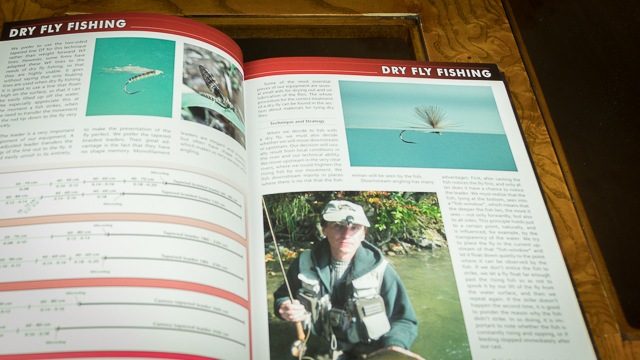
The teaching and fly patterns that form a core element of each tactic really will raise your game on-stream across the board for European competition tactics (including dry fly, nymphing with both floating and sinking fly lines and streamers). Of all the books on fly tying that I’ve seen, this is the one that also provides a selection of the most effective competitive river fly fishing tactics tested on the world stage. It also allows you to genuinely recreate the fly box contents of multi world-championship-winning anglers.
Inside the book, there is a clear, full-colour step-by-step photographic and written instruction guide to all of the core “types” of fly.
Then for every individual fly of the 222 you can tie (!), there is a written recipe along with a high quality colour photo. This means you can simply follow the colour/material variations to create each individual pattern – once you’ve mastered the step-by-step demo of the core example for each genre.
Those “genres” of flies will arm you with exactly the same “ammunition” for the world-beating range of tactics employed by the Czech World team for their river fly fishing domination (and so include streamers, dry flies (including sedges), Czech nymphs, bead head nymphs, jig-head nymphs, tungsten thorax nymphs PLUS bloodworm larvae, buzzers and suspender buzzers for stillwater as well as river use).
You can buy Fly Fishing & Fly Tying II on Amazon UK HERE:
How to Fool Fish with Simple Flies (Paul Gaskell and John Pearson)
Look, obviously this is my own book – and the majority of the written content is devoted to developing and explaining the system I developed to teach folks how to use on-stream conditions to select effective flies AND presentation tactics. However, there are tons of flies (wonderfully photographed by John) along with recipes for tying them. So once you’ve got your basic skills down, you can use this to create a powerful selection of flies for river trout fishing.
A special selection of 12 flies from “How to Fool Fish” is what John shows you how to tie in his “Complete Kebari Collection” DVD (mentioned above) – and this results in a fly box that will serve you well on any trout river in the world.
Grayling Flies (Steve Skuce)
Steve Skuce is an officer for The Grayling Society and so it makes perfect sense that he should produce a book documenting flies that are especially suitable for “the lady of the stream”.
Of course this book provides you with a wonderful collection of flies to tie – there’s even some lovely photographs of authentic Sawyer Pheasant Tail Nymphs and Killer Bugs (supplied on cards) that have been tied exactly to Frank Sawyer’s recipe by Frank’s widow Margaret in the late 1980s.
In truth, the fly patterns in Skuce’s book will provide a solid array for both grayling and trout in flowing water, but there is a nice focus on fishing the flies for grayling within this book too.
What to expect
There are tool and materials tips, descriptions of grayling fly fishing rig components, considerations of grayling as a quarry for the angler, interesting background stories and detailed step-by-step instructions on tying each pattern.
All of these elements are illustrated with nice colour photography and the occasional diagram. There is a “finished fly” photo for each pattern described for you to model – though there are not “individual step” photos to accompany the tying process descriptions (hence this is included as an intermediate tyer’s book).
Wet flies, nymphs and dries are all covered – and the selections span traditional and modern patterns very nicely.
Verdict and Special Plus Points
While I’d take issue with the description of “tenkara” within the book (you’d expect nothing less I suppose!), this is a warmly-written book full of good humour and enthusiasm for the target species and the flies surrounding it. You’ll discover a really interesting selection of flies – and I particularly like the inclusion of the section on fish welfare related to catch & release and good practice when photographing your catches.
You can Buy Steve Skuce’s “Grayling Flies” on Amazon UK HERE:
Fly Tying Books for Advanced Tyers
Oliver Edwards’ Flytyers Masterclass (Oliver Edwards)
A bold and unapologetic work that lays out Oliver Edwards’ mission in 20 fly patterns.
After failing to find existing patterns that, to his eye, adequately copied the outlines of the food that trout eat, Edwards set out to create his own.
The book – as forthright as its proud Yorkshireman author – gives a short, two-page background introduction. It then cracks straight on with the business at hand…
Brief Summary
Each of the 20 patterns start with a consideration of the key points about the natural insect which is being imitated. Then we are treated to the brilliant use of high-quality drawings that show the critical details of each tying sequence. The diagrams and the descriptions walk you through step-by-step and this gives you the best chance of matching the incredibly high-standard tying demonstrated in this book.
The diagrams are black and white and, because of their quality and the understanding demonstrated in them, possibly clearer as a result of avoiding the full colour option. The attention to detail is exquisite and this is a real deep-dive into the river angler’s fly tying art.
There are also beautiful, artistic colour photographs of each completed pattern – featuring inventive settings that stage each fly artistically. It is a sign of Edwards’ achievement that tying these patterns is something of a rite of passage for many aspiring tyers.
Supporting Resources
If you’re interested in tying Ollie’s patterns – you should definitely check out the DVDs in his series “Essential Skills” as you’ll get extensive personal demonstrations of his tying sequences too.
How come you own this “close copy” Fly Tying Book?
You might be surprised to learn that I own both Flytyers Masterclass (book) and the majority of the Essential Skills videos too (particularly if you’ve watched much of our fly fishing biohacks content and/or checked out “How to Fool Fish”). You might also be surprised, then, that some of Oliver Edwards video content focuses on the ultra-impressionistic North Country Spiders (more on which below).
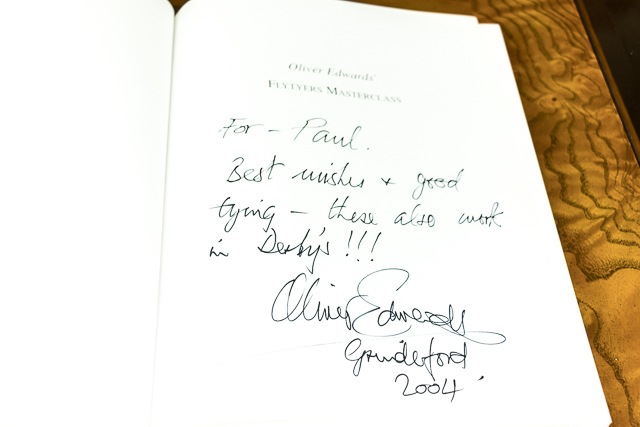
In my own case, there’s a few things going on. First of all, there is the enjoyable act of tying in and of itself. Of course, there is a pride in being able to do something well, and the careful, involved style of tying in “Masterclass” is a great way to gauge your abilities.
Secondly, by proving that to yourself, it gives you even more confidence to arrive at the “simplicity on the far side of complexity” (although Edwards himself would probably be keen to remind me that he regards the patterns in Masterclass as simple enough for anyone to tie by following the instructions).
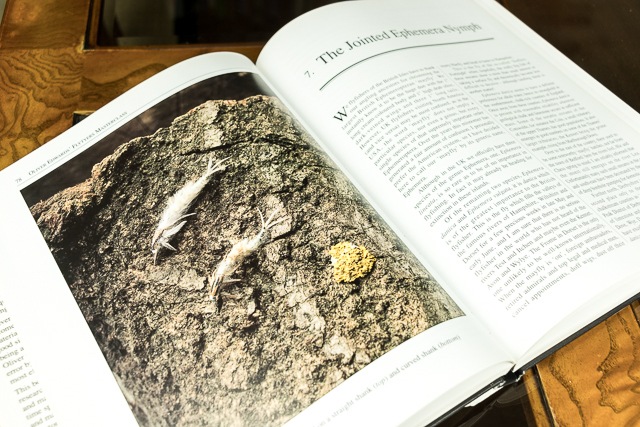
Overall, I’d say that if you are even a little bit curious about exploring the tying skills revealed in this iconic fly tying book, then you should give it a go.
You can Buy Flytyers Masterclass on Amazon UK HERE:
You can Buy Flytyers Masterclass on Amazon USA HERE:
Now, back to that idea of arriving at simplicity after going through and understanding complexity…
The North Country Fly: Yorkshire’s Soft Hackle Tradition (Robert L Smith)
Here’s a great paradox: How come the book about the flies with (probably) the fewest ingredients and tying manoeuvres is featured in the “Advanced Fly Tying Books” section here?
Well, it is because to tie North Country Flies at a high level there is absolutely no place for any poor technique to hide. It is a bit like great chefs’ dishes that have the fewest ingredients – these are the ones that MUST be executed PERFECTLY.
What should you expect?
Rob Smith can certainly execute and his book is (to be fair) much more than “just” a fly tying guide. It is the end product of lengthy research into the history (and often family histories) of the development of a rich, varied and often controversial school of fly fishing and fly tying.
It also contains a ton of unique photographs of actual historic samples of many of the flies featured – preserved and catalogued by being sewn onto vellum sheets or the pages of books that describe their tying.
That being said, the reason I include it here is that, as well as the exceptional photographic series of the flies tied in the modern era at the vise of the author (plus the offerings of a selection of other modern advocates too), there are also some fantastic tying instructions.
Great use of diagrams
These take the form of super-magnified colour diagrams that break down what needs to be happening at the individual thread-wrap (and material-catch) level.
Going to that level of detail and practicing endlessly is the only way to master the material control needed to produce flies that are as lovely as the modern examples photographed in this publication. It’s another good reason that Smith’s book sits in the advanced section of this article.
Also included in this book is an extensive photographic record of the huge range of feathers plus silks and other materials used in making flies in this tradition – as well as some excellent fishing techniques advice.
You can Buy The North Country Fly on Amazon UK HERE:
You can Buy The North Country Fly on Amazon USA HERE:
Fly Tying Books Final Round-up
As I mentioned at the top of this guide, each of the fly tying books featured here had to be of a high quality in order to be included at all. Because of that (and since there are links to each of the books – not just the ones that get the most positive coverage!) there is no pressure for me to give better reviews of the titles that might earn us Amazon affiliate commissions.
My overall hope is that you will find inspiration and confidence in these recommendations that are ideal for the stage you are at right now in your tying. That stage might be “never owned a vise or tied a single fly” right through to having already tied for decades.
I’d love it if you were able to progress through from the beginner titles and then take your pick of the intermediate and advanced content too. Perhaps the last thing to say is that I’ve really enjoyed delving into these books personally (they are all personal purchases or birthday/Christmas presents – rather than “review copies”) and having the excuse to study them in detail again has been great.
Let me know about your experiences with these books (and please let me have any questions) in the comments below.
As ever, if you enjoyed this and think other folks might benefit – please help spread the word using the social share buttons on this page.
Happy tying,
Paul

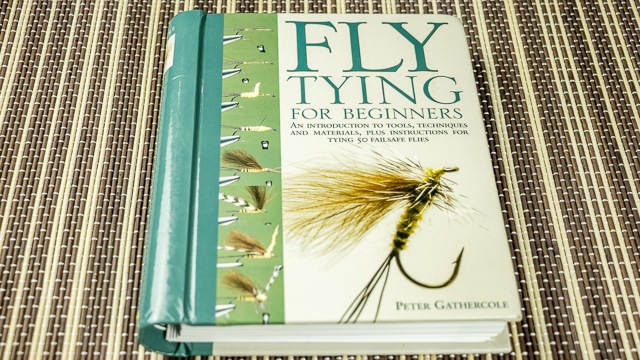
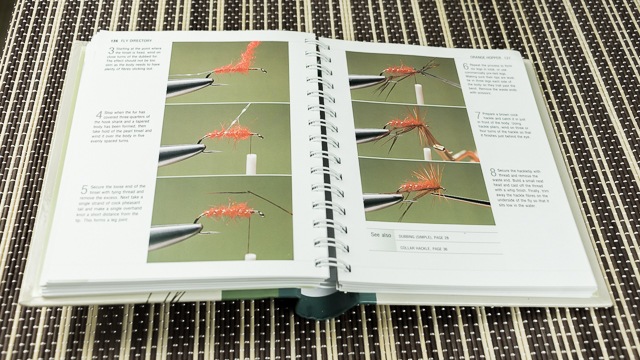
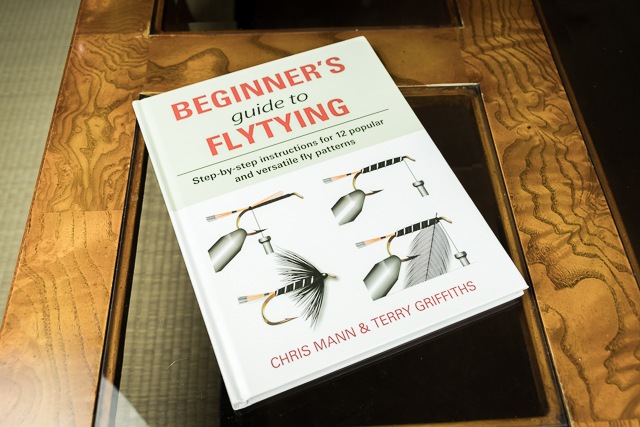
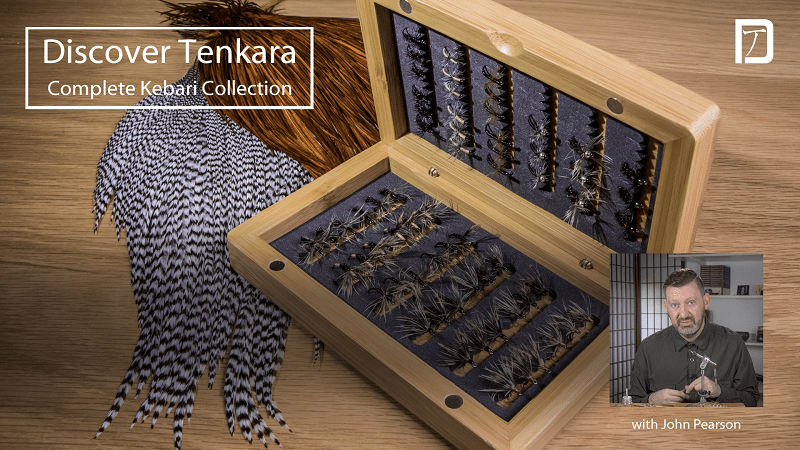
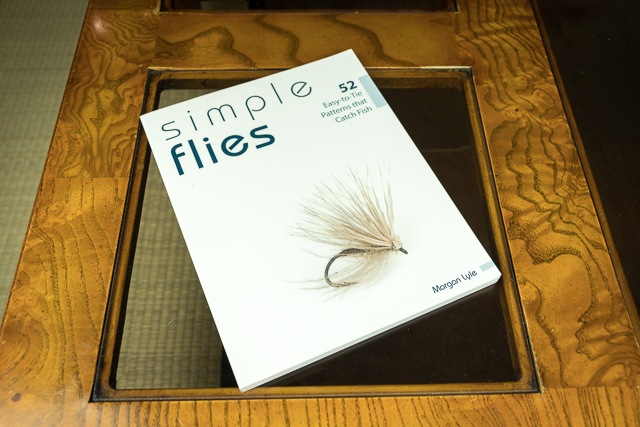
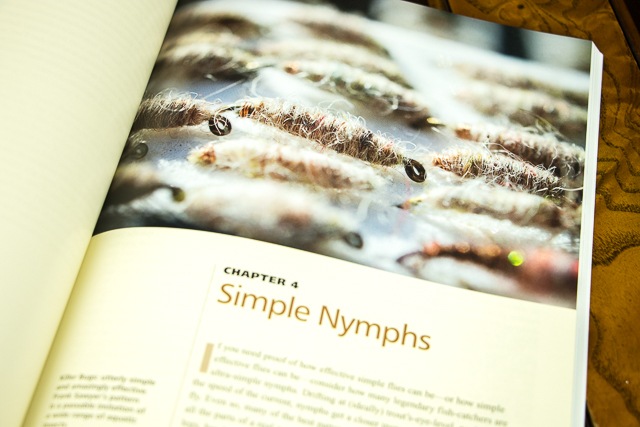
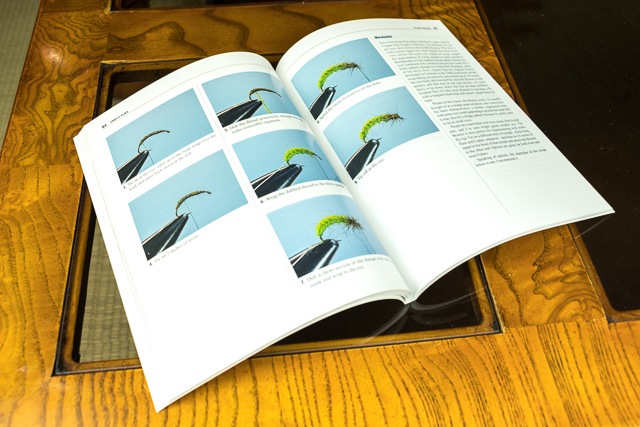
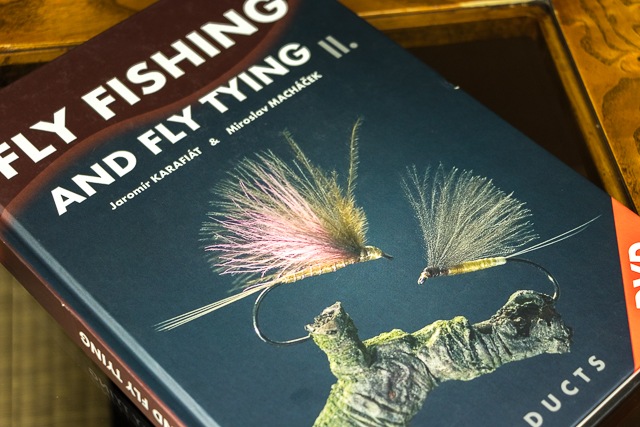
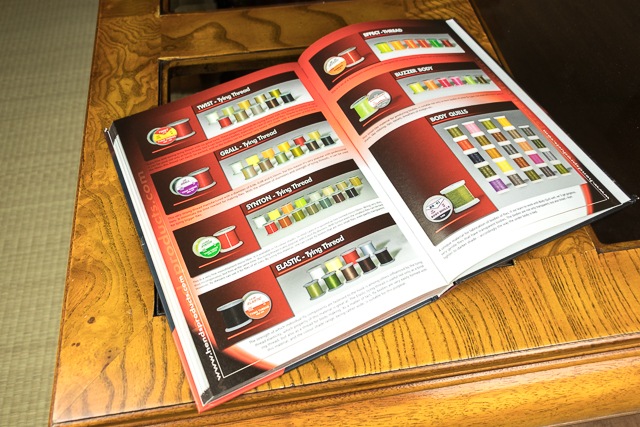
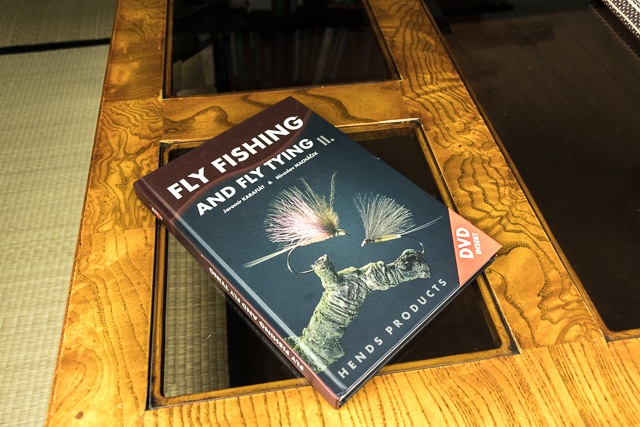
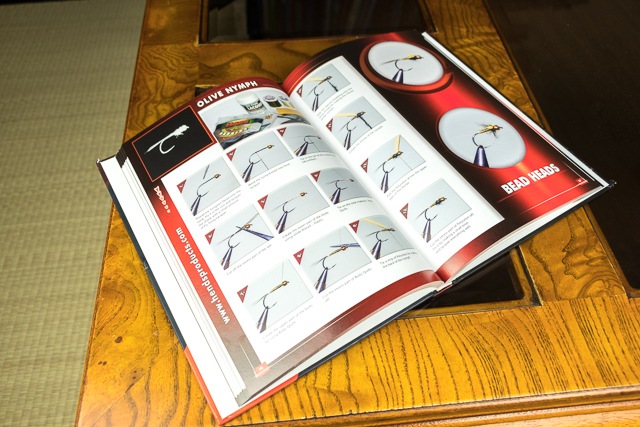
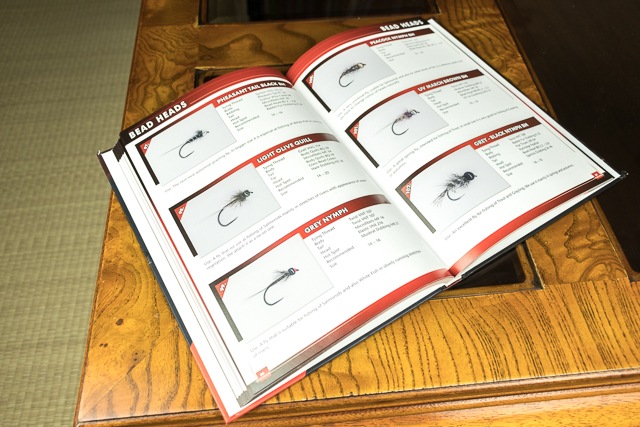
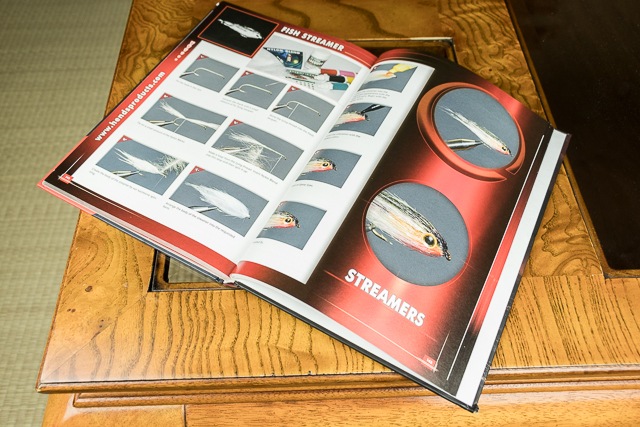
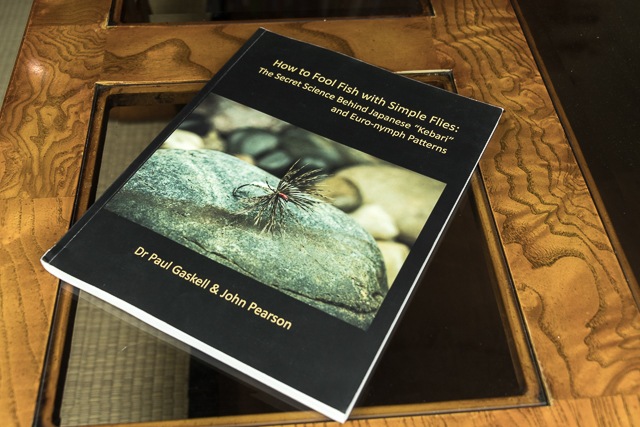
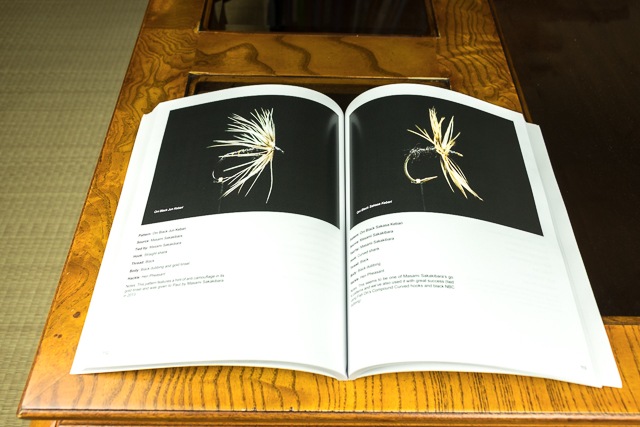
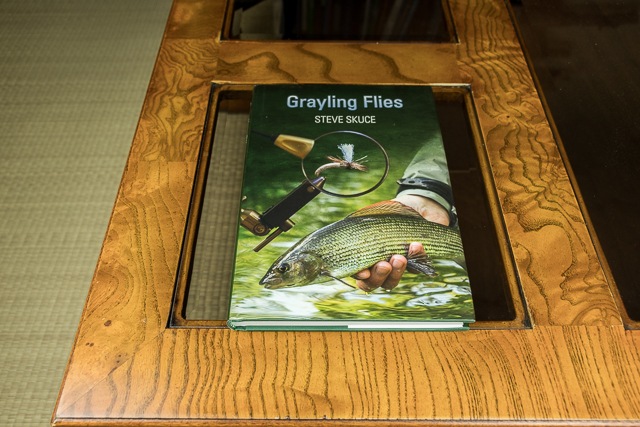
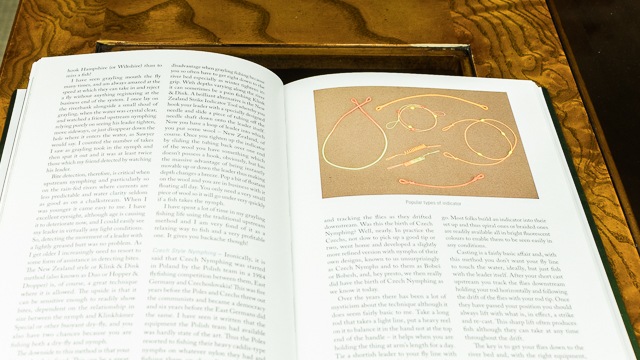
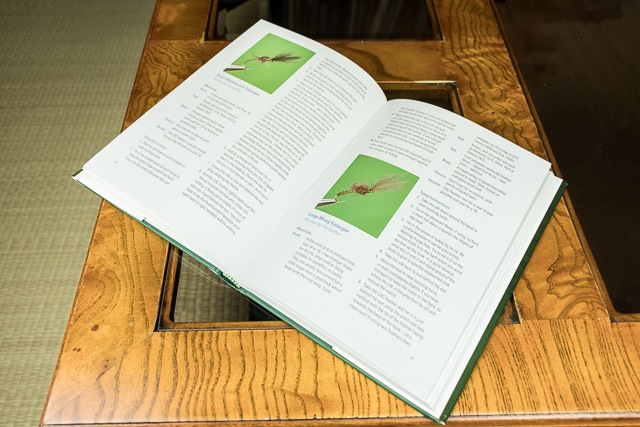
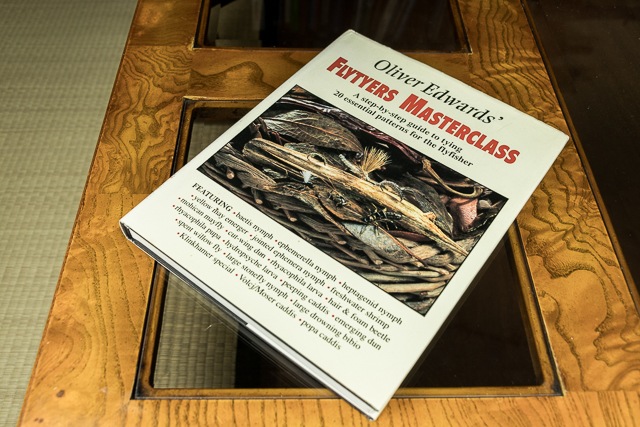
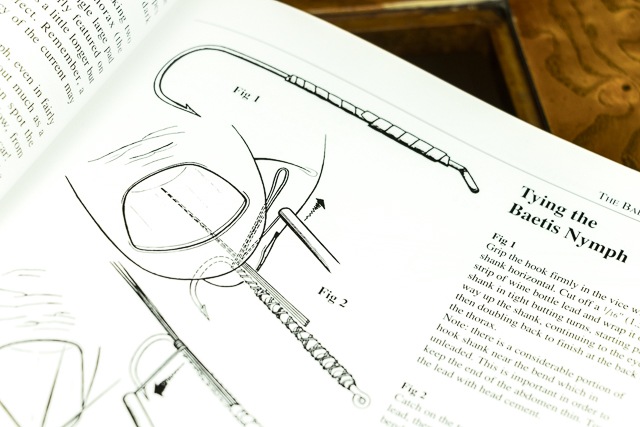
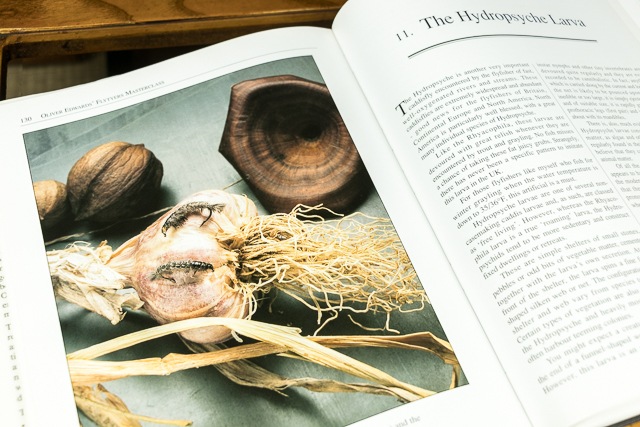
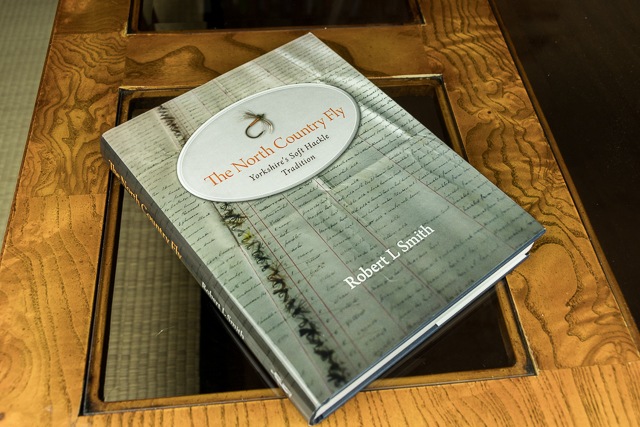
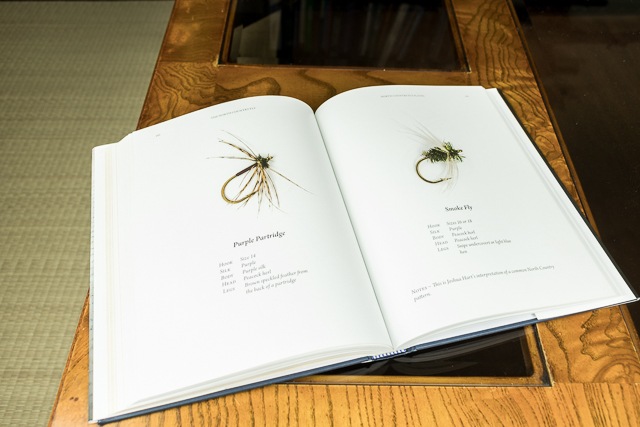
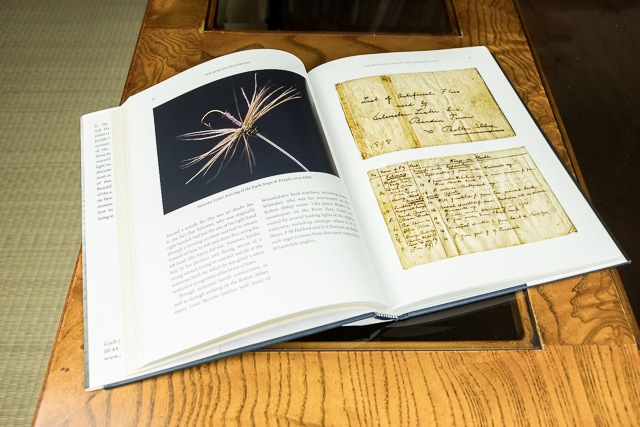
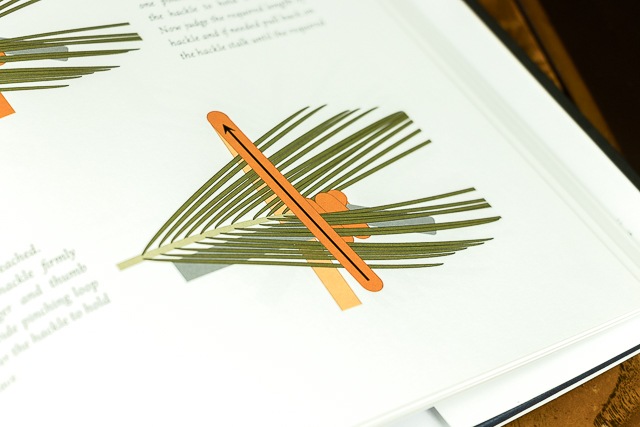
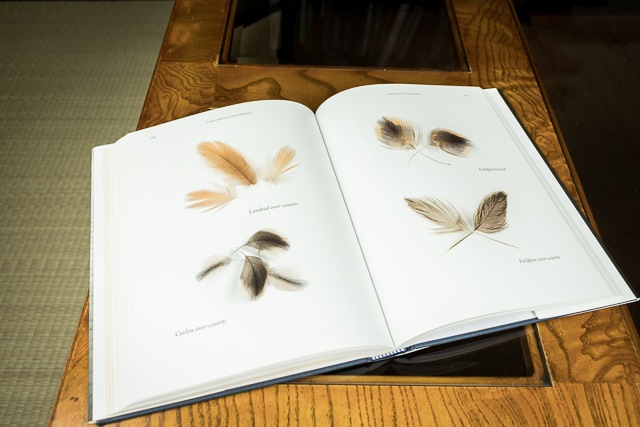
Simple Flies is, as you remark Paul, a very fine reference indeed. Full of inspiration to adopt a minimal mindset in tying that sits very nicely with Tenkara as Western style fishing.
Yes, it’s a great mix between well-written accounts and then clear instructions on creating the featured flies. Morgan is a great writer.
I believe Charlie Craven’s Books should be added to the list. Extremely well put together, from explaining the fly to simple instructions on the tie, and how to fish with each fly.
Jim thank you for that. I’ll have to try to obtain a copy and have a look for myself.
Much appreciated
Paul